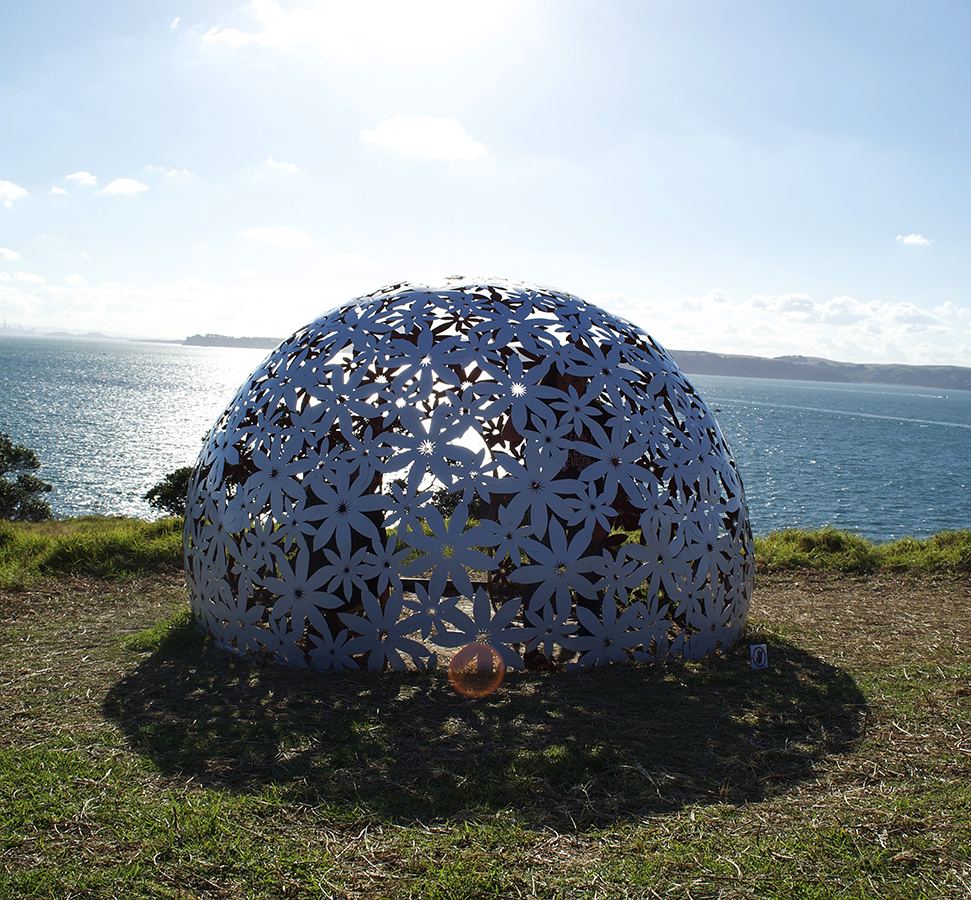
Flowers of the sky
Steel, paint
“I love the profusion of white clematis flowers above the tree canopy in the spring and have used the repeating clematis flower as my inspiration.
Each flower is individually laser cut from steel, then welded together to form a dome. The white dome adorns the hillside from afar. When you approach you can enter through a low doorway and sit or lie and enjoy the play of patterns and light. It is a quiet space for reflection and contemplation, my little church for the non-religious.”
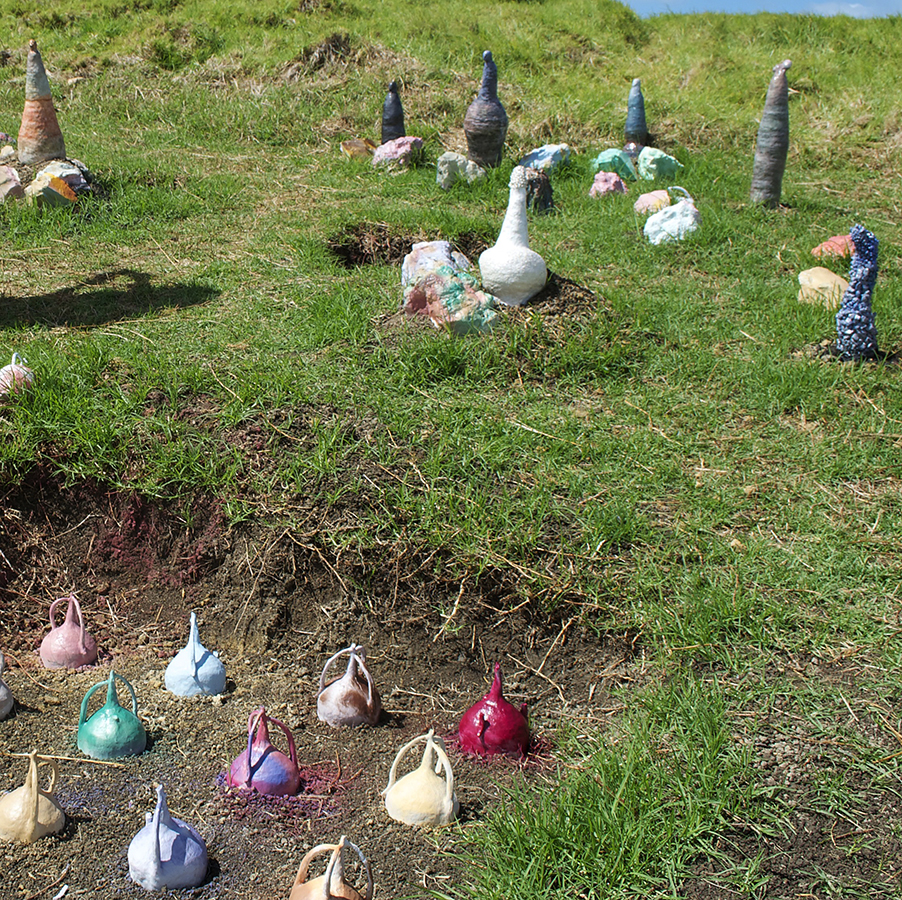
Garden, 2015
Fired clay, nail glue, plaster, tempera, acrylic paint, oil paint, gesso, zinc,various pigments, garnet, crystal, steel, plastic, resin, glass, foam, mica and plants
“Garden is a mixed-media installation of red-clay vessel- figurines in various stages of emerging from the earth. Nebulous figurative forms, whose materiality and placement reflect the interaction of people with the environment as they guide and follow the formation of the land. These inhabitants escort viewers past formations of partially embedded fragments of clay vessels, cross- sectioned reconstituted sculpture, and rubble scattered in ruin-like manner.
This faux archaeological scene invites people to engage with imagined fragments of history and abstract narrative. The subject of archaeology suggests the unexplained or mysterious, the connection of physical object to mystery and discovery. These works offer moments in which to contemplate the harmony and collision of people and the land over time.”
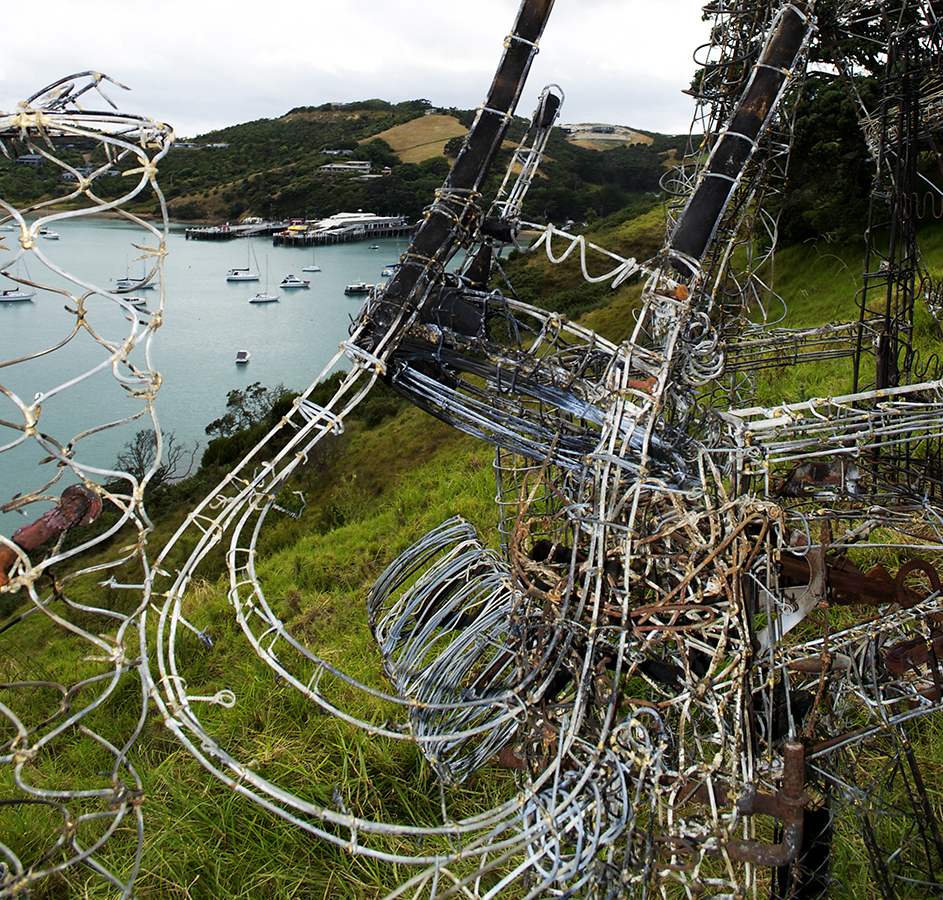
Colonial Fence – a modern day tinker, 2015
Number 8 wire, various other wire gauges, steel, wood
“The story of wire objects begins in seventeenth-century Slovakia, where thin strands of laminated iron forged by ironmongers were first used to repair broken pottery. Little by little, wire work developed into the making of everyday objects, a trade that swept throughout Europe, Russia and into America. As a trade, it never made it to New Zealand in the above form. The nearest equivalent is the number 8 wire mentality, synonymous with kiwi ingenuity and innovation. Instead of creating objects, wire was used to fence thousands of kilometres of farmland – ‘straight lines en-masse’. History has shown there are one hundred and one other uses for this iconic material beyond fencing.”
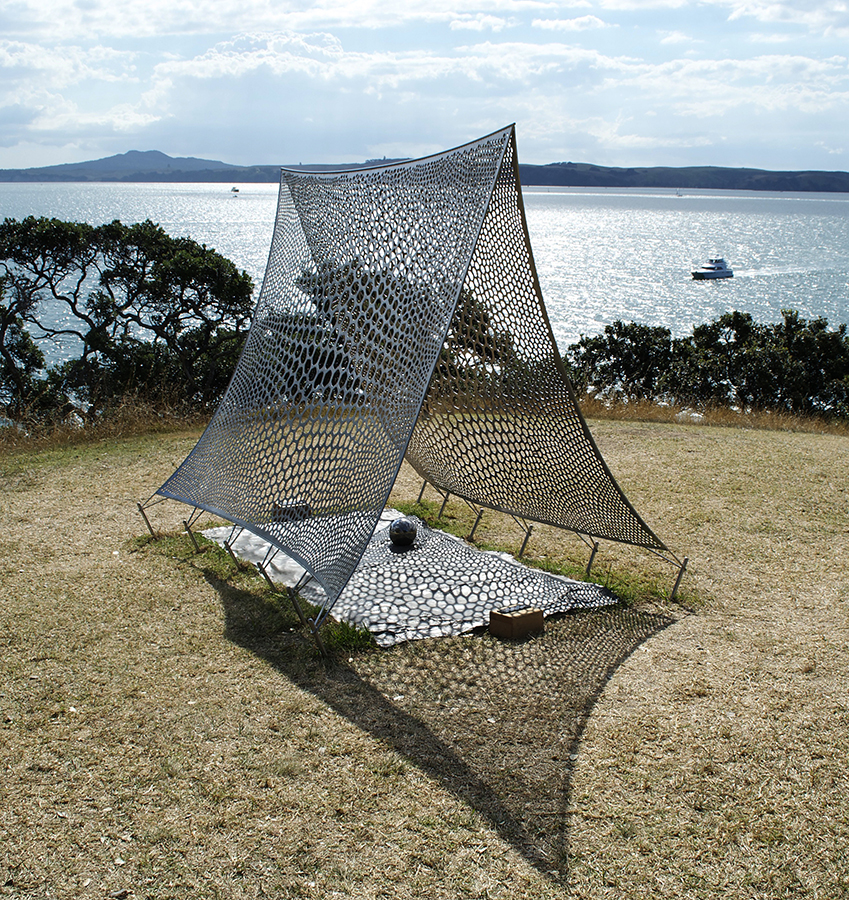
Garden of Shadows, 2015
Embossed lead, Marine Grade 316 stainless steel
Garden of Shadows is a work of memory and forgetting. The double sided tent-form alludes to summer games played in a child’s makeshift tent. The lacy ‘mantle’ canopy of holes is a frail and fragmented shelter, referring to whispered stories, wishes and a glimpse of the unspoken. The perforated form casts complex patterns in sunlight, creating optical distortions as visitors pass. Inside the tent, layers of embossed words selected from writings of WW1 poets will be added during the exhibition referring to loss, the fields, skies and hearts of lead.
‘No child or future generation will ever know what this was like… When it is over we will go quietly about our business and we will not tell them. We will talk and sleep and go about our business like human beings. We will seal what we have seen in the silence of our hearts and no words will reach us.’ (Birdsong: Sebastian Faulks)
In researching and creating this artwork, as the child of a soldier who survived the First World War, I have focussed on the ‘everlasting shadow’; the mantle carried by families of broken and decorated soldiers, who as survivors of the Great War carried their horror forever from the battles of Messines, Arras, the Somme and Passchendaele.”
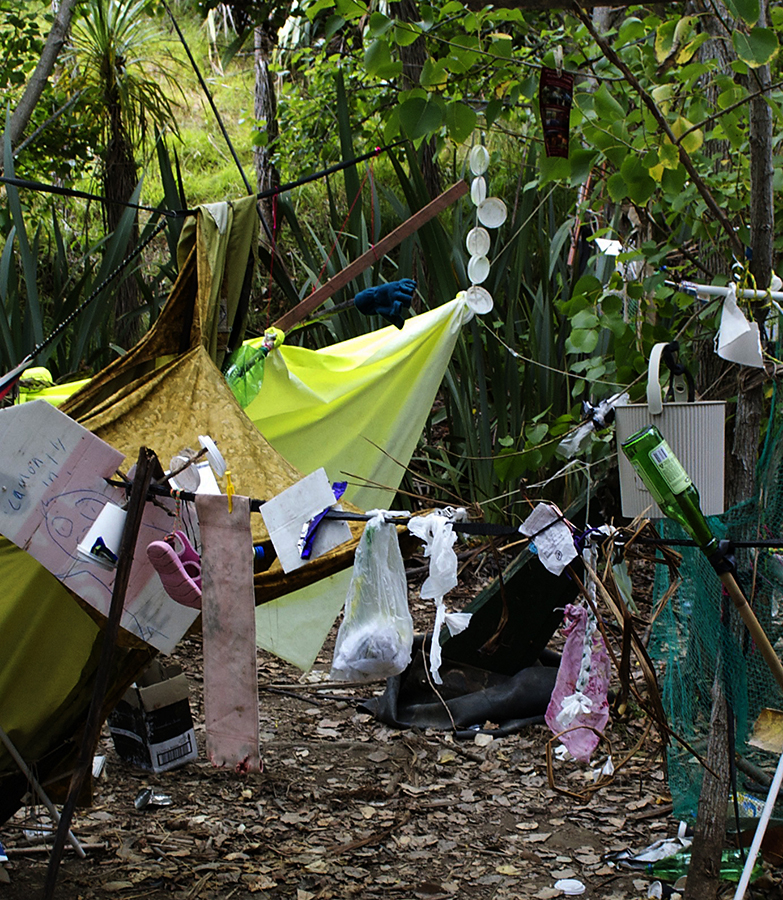
making-do(ing) | on enjoying our gardens and other wild places, 2015
Human and non-human animals, various materials gleaned from Waiheke
Constantly shifting dimensions
Visitors are invited to spend time with artists on site and make something to take home or leave behind; artists are available to facilitate similar work.
“Sculpture as making and a starting point and platform for convivial creation and enjoyment.”
– Allan Smith
“Craft as shared or collaborative practice, the ability to invent, adapt, and improvise with limited means, and as humanly-scaled, environmentally attuned technology.”
– Allan Smith
We will be present for the duration of the exhibition continually constructing a playful and frugal environment that makes use of resources already on Waiheke. It will include donated and gleaned materials like beach rubbish, garden weeds like bamboo, scraps from other artists’ works; and local sources such as the Ostend Transfer Station and the New Hope Op Shop.
This work takes inspiration from the book titled Notes from a Non-Gardener’s Diary: (On Enjoying Our Gardens and Other Wild Places) by Waiheke legends Lyndsay Meager and Don Chapple, 2003.Xin Cheng and Chris Berthelsen
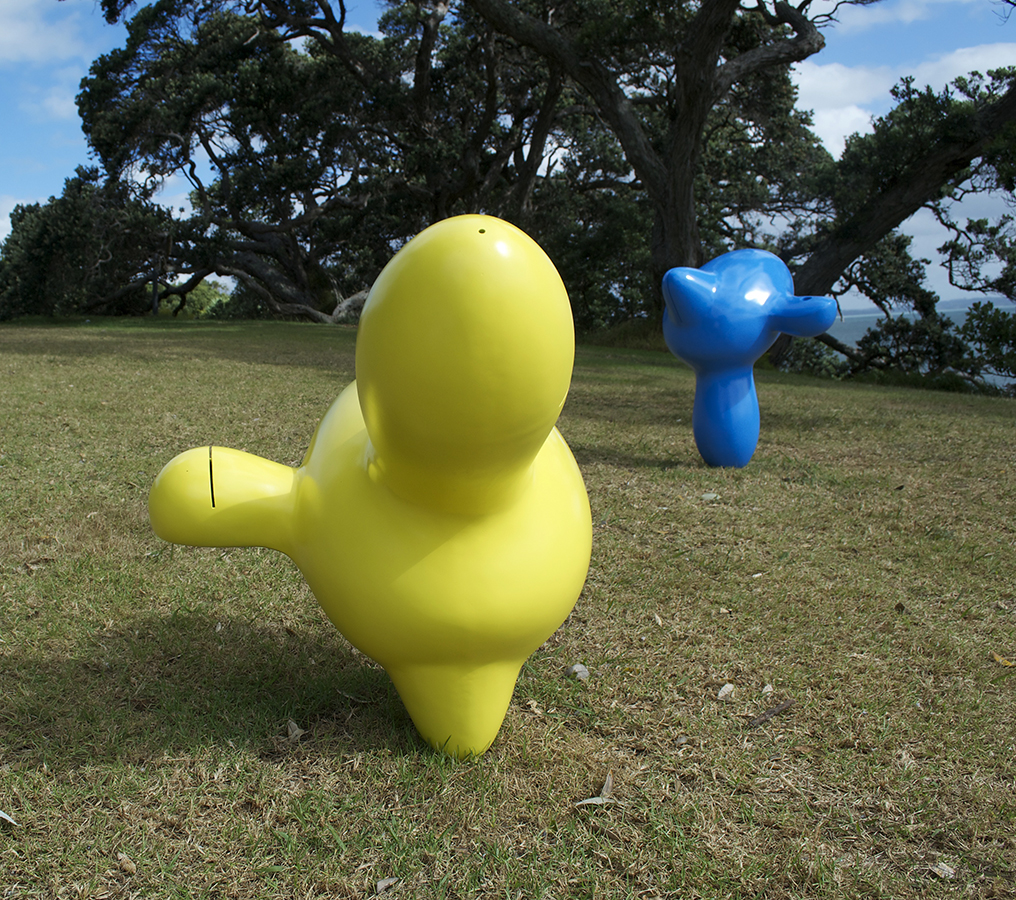
Cr – bovunculae, 2014
Cast and 6060 T6 aluminium alloy, two pack Caprithane
“When the familiar becomes strange and we can no longer identify, or possibly accept what we see, we are forced to ask questions. Our perception ofwhat might be regarded as normal is changing at a rate where ideas of what constitutes natural or artficial will eventually blur into ambiguity.”
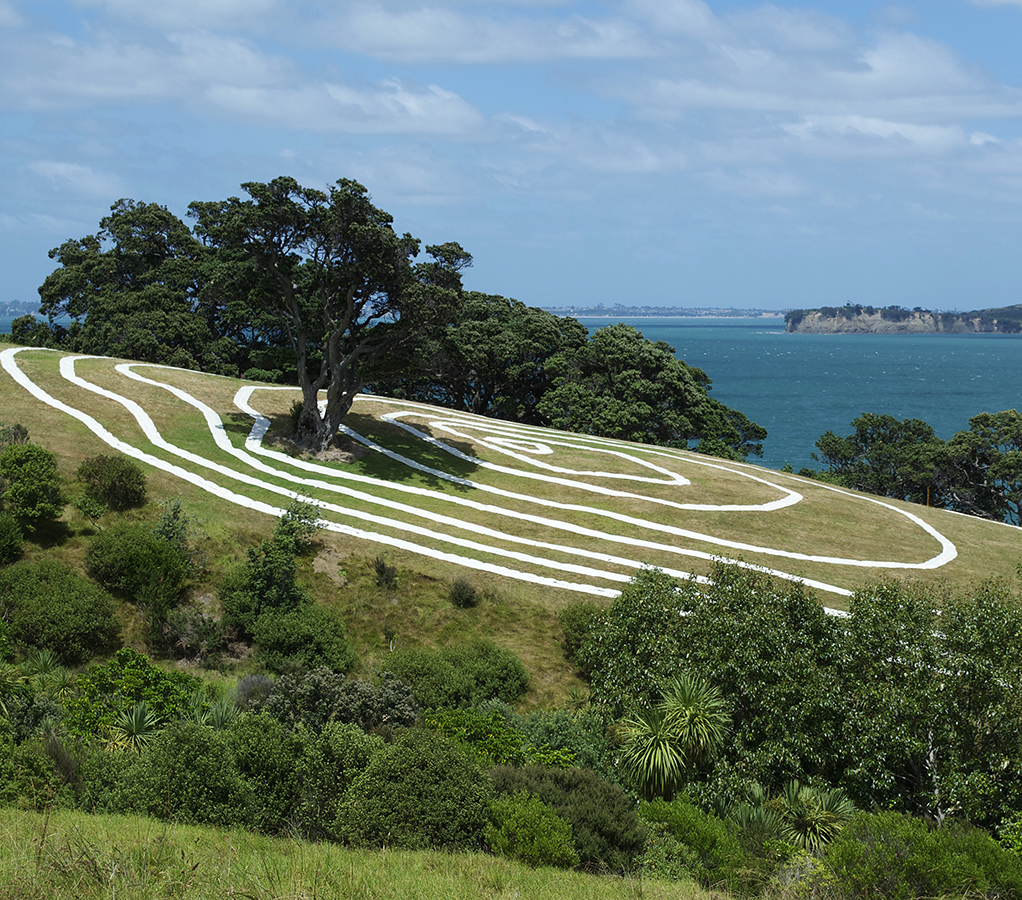
Landform, 2015
Supersized masking tape
Veronica Herber’s art practice engages with materiality and temporary transformation; both of her chosen material, masking tape, and the site she interacts with. In this installation Herber utilises simple mapping and contour lines to allow the site to reveal its form. The masking tape adheres to the land and is reinforced with thousands of hand-made staples. The work will ‘hold fast’ despite the many challenges presented by the elements.
“I was interested in creating a piece that would be seen from the ferry, so the connection to the land would begin even before the viewer reaches solid ground. For me the line is a pure form of expression; to impose a series of minimal contour lines onto the landscape opens up ideas of control and revelation.”
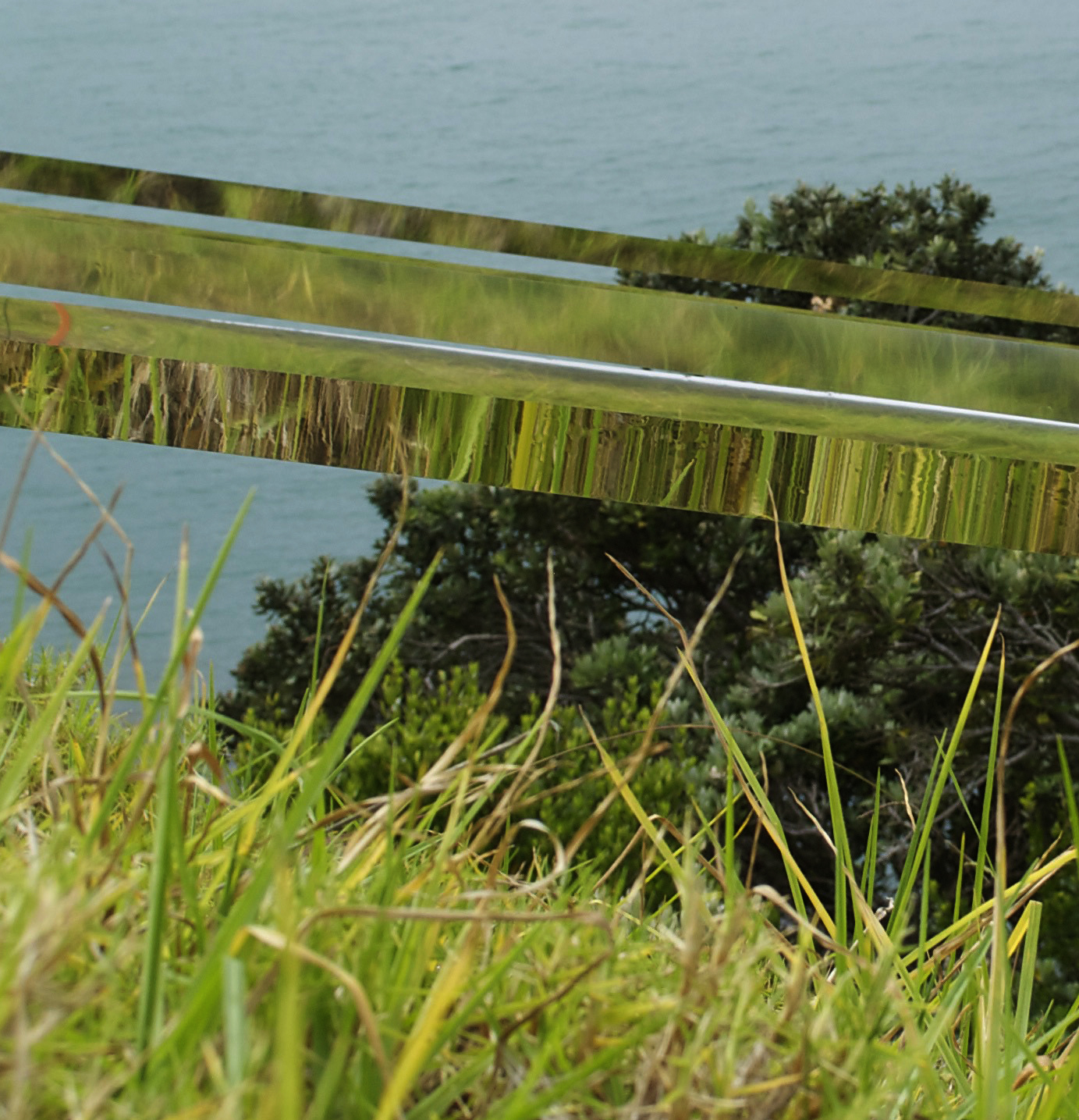
Parang Param, 2015
Metallic polyethylene strip, steel rod
“Parang means blue in Korean; I wanted my work to absorb various blues from its surroundings and from the audience. It is something atmospheric and emotional; blue reflects both onto and out. The work involves the environment to activate its full representation of visibility and invisibility/ disappearance. It wants to represent and reflect the elements of light, wind and surrounding colours in a concentrated form. It will provide a combined experience of landscape and seascape.”
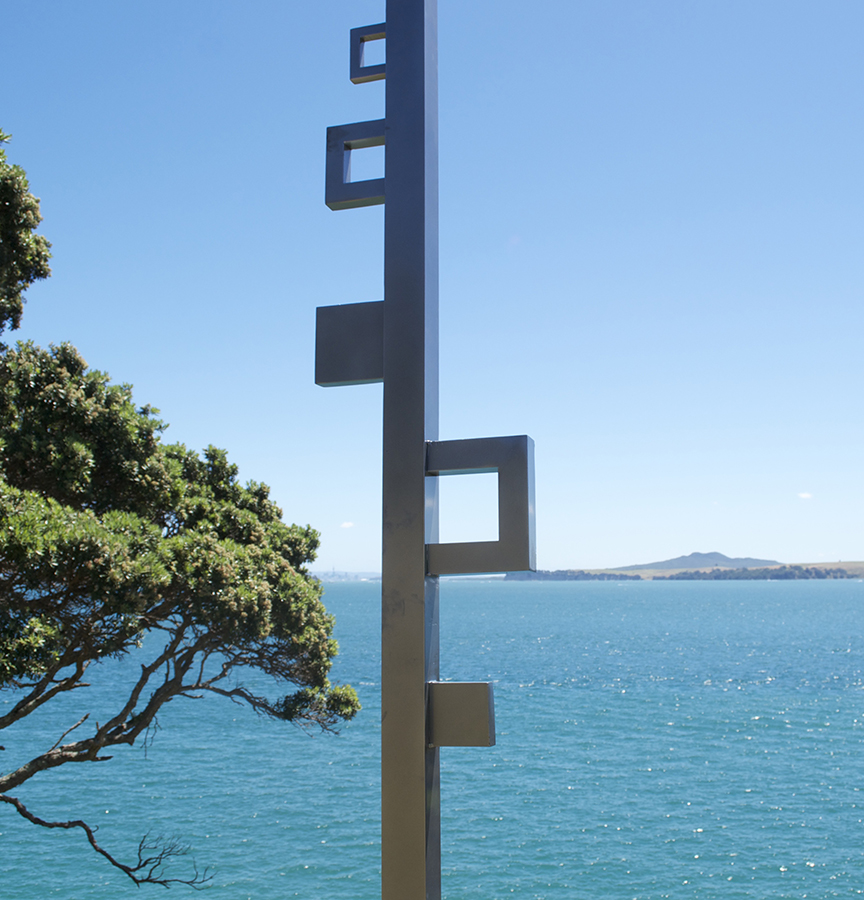
Medley: Part I – XIII, 2015
Powder coated aluminium, software
Medley is a composition for a section of the walkway on the Matiatia headland; twelve vertical poles standing like twelve musical notes on manuscript, waiting to be played. The audience is invited to extend the sculpture into online space by taking selfies with the poles and uploading these to a central image repository. The photos are then woven together, creating a digital structure that continually updates as new images are submitted. Medley thus becomes a sculpture co-created between artist and audience existing simultaneously online and of offline, a synergetic constellation of paint, pixels, and the land beneath.
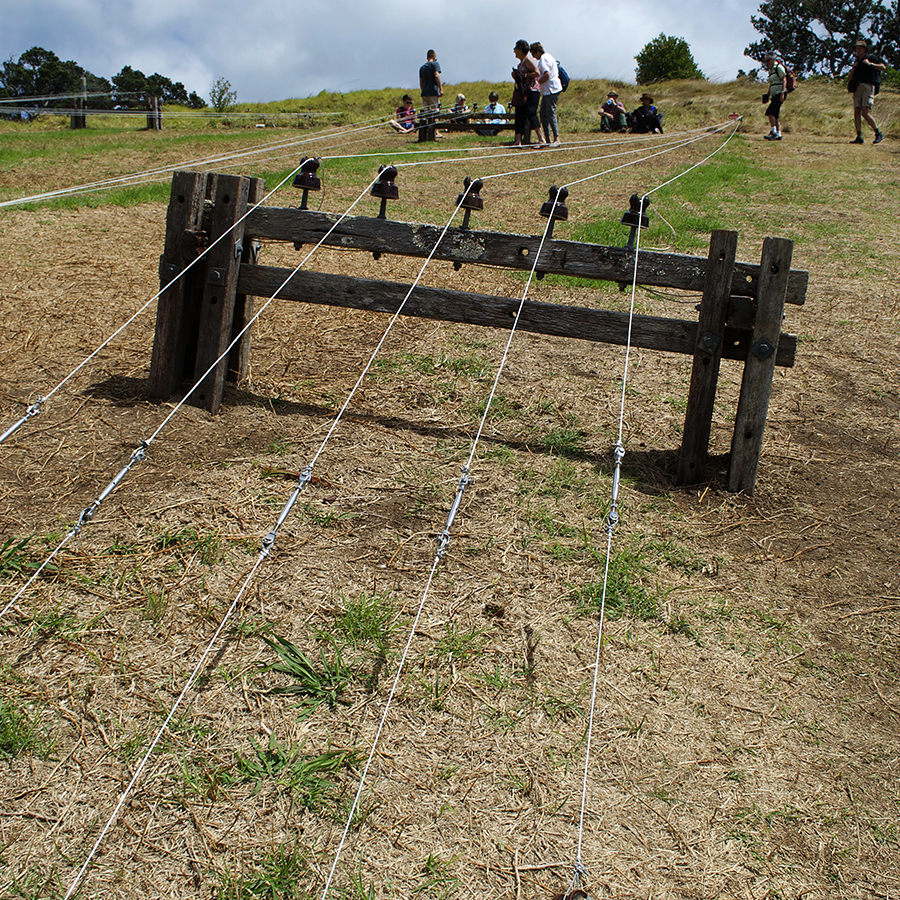
Crossed Wires, 2015
Crossed Wires presents a sonic montage of fragmented sounds which suggest through vocal utterance or musical instrument a call or cry. These sonic fragments have been recontextualised from music composed by Helen Bowater to underline this intention. It sits lightly on the environment as a multi-layered braiding of stories that act as a bridge to a world of wonder. It is a work that literally pitches as much as it rolls. Crossed Wires calls us to attention and invites us to cast a line into the endless ow of the quotidian and draw a moment of reflection from the experience.
“…time to see, in broad daylight,
streams full of stars, like skies at night” – W. H. Davies
Thanks to Pepe Becker, director of Baroque Voices, for permitting substantial quotes from Ftatsu No Umi (comp. Helen Bowater) and to David Bowater for his recordings of Bodhgaya monks, insects and bird calls.










